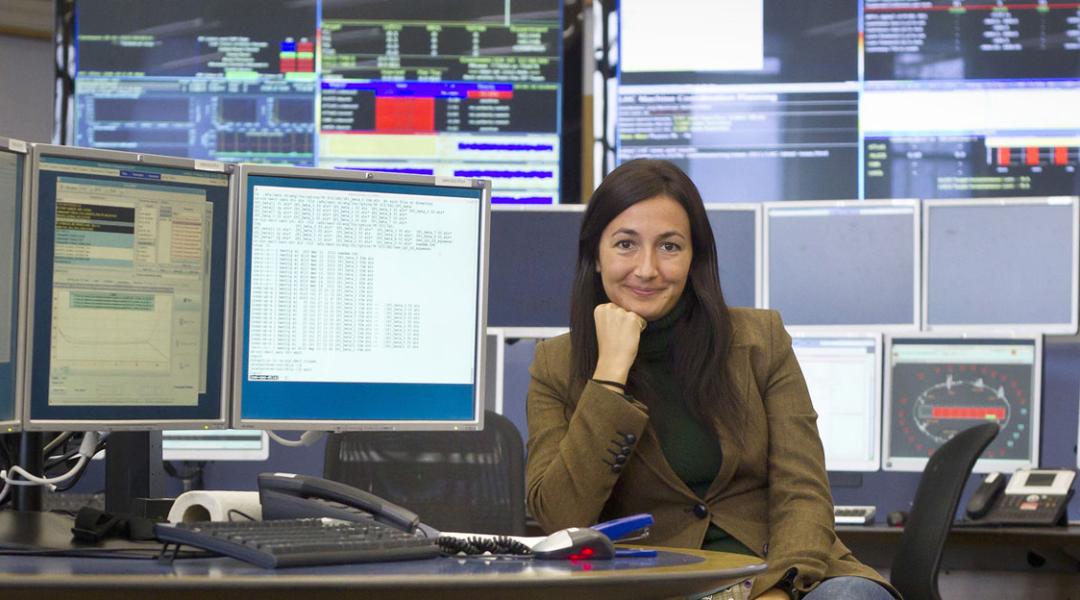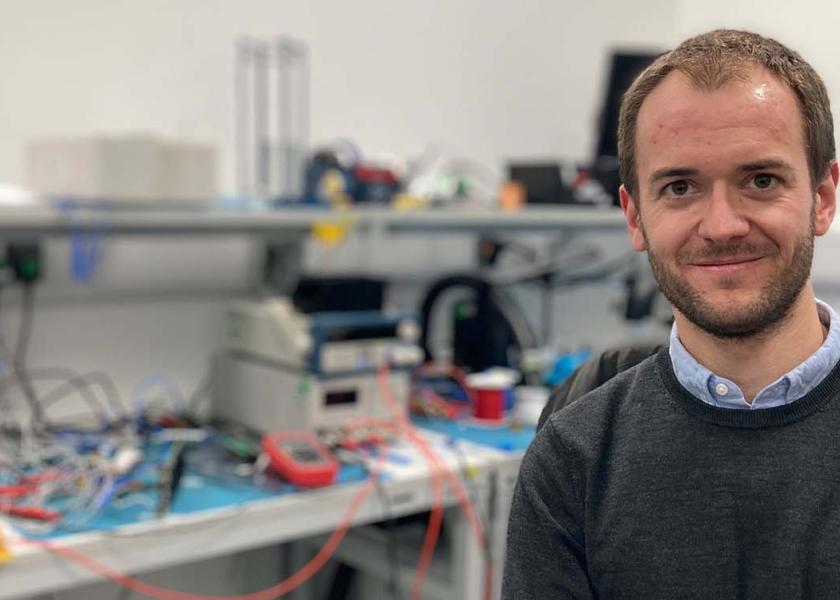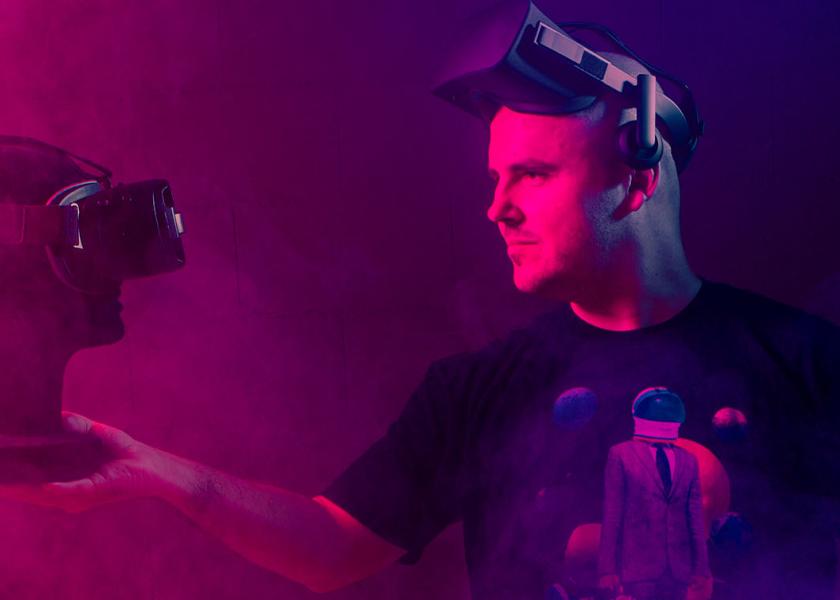Sonia Fernández-Vidal
Entertaining science

Sonia Fernández-Vidal’s great passion is science. And it shows. Her eagerness for bringing science closer to the general public, especially everything related to quantum physics, has led her to teach at university, give talks at international symposiums, and even publish several successful books. Described as one of the most creative people in the world by Forbes magazine, science has the best ambassador it could find.
As far back as she can remember, Sonia Fernández-Vidal (Barcelona, 1978) always dreamt of becoming a scientist, specifically a physicist because “it’s the field of knowledge that explains how the universe works.”. She has inherited her enthusiasm for teaching from her grandparents and parents, which is why for years she was a professor and researcher at the Department of Physics of the Universidad Autónoma de Barcelona. But not only that. She has captured her knowledge garnered at prestigious centres like the Large Hadron Collider (LHC) at CERN, Los Álamos National Laboratory (LANL), or the Institute of Photonic Sciences (ICFO) in the editorial world in a simple, entertaining way, suitable for both children and adults. Her trilogy La puerta de los tres cerrojos, which, against all odds, became a bestseller and whose rights were sold to twelve countries, or titles like Quantic Love, Desayuno con partículas or El universo en tu mano are proof of her work to bring quantum physics closer to the general public.
Where does your passion for science come from?
As a child, I wanted to understand the reason behind everything and how the universe we live in works. So, for as long as I can remember, I’ve always wanted to be a scientist. In fact, I used to say that I wanted to become a scientist and do research in Antarctica. In secondary school, when I studied it for the first time, it seemed amazing to me, and I thought that it could answer the million questions that kept popping into my mind. At university, I found quantum physics and it was a shock because, suddenly, nothing worked like that Swiss watch that the laws of physics describe, but fundamental particles could move through walls and be in two places at the same time. I thought the universe was trying to tell us something. It drew me in.
For those not well-versed in quantum physics, what is it and what is it for?
Quantum physics tries to describe fundamental particles, which are even smaller than atoms and which make up everybody and everything we see. It’s a bigger part of our lives than we think. In fact, more than a third of our economy is based on it. All modern electronic devices work thanks to technology developed with quantum physics.
“People are much more interested in science than it seems, you just have to find the right angle to make it attractive”
You’re a researcher, science communicator, writer… Which field do you feel most comfortable in?
They are complimentary fields that I’m passionate about. Perhaps because of genetics teaching runs through my veins, since my grandparents and parents were teachers. I really loved teaching at university, and in certain ways I feel like books are a fantastic way to reach more people. At the end of the day, the La puerta de los tres cerrojos trilogy is a story and tool to make learning more fun. We’re living in a hyper-technology era, with extraordinary opportunities; nevertheless, society doesn’t know how that technology works. If anything can grant us more freedom, it’s knowledge. Learning how these technologies work is the tool we have to empower ourselves.
Your books on quantum physics have been a tremendous success. Does this prove that people are interested in science if they can consume it in a more approachable and entertaining way?
To be honest, I didn’t expect them to do as well as they have. As an anecdote: at the beginning, one of the publishers’ sales reps asked me if I was crazy thinking about launching a book about physics for kids. In the end, the numbers were good, and it’s been interesting to see the reaction of readers. People are much more interested in science than it seems, you just have to find the right angle to make it attractive. We often assume that if a topic is difficult the general public won’t enjoy it, so we get used to offering simpler and less elaborate content

With the saga ‘La puerta de los tres cerrojos’, Sonia Fernández-Vidal has brought the world of quantum physics closer to thousands of young readers. © Image courtesy of Planeta
Is scientific talent valued in Spain? Which is the situation of science in our country?
The situation in Spain is quite dramatic, there’s a huge brain drain problem. In our country, science has always been affronted and we’ve never integrated it as part of our culture. English-speaking countries have assimilated it better. We don’t have the knowledge and, as a society, we need to take informed decisions.
“In the United States they’re not so worried about failure and mistakes aren’t penalised as much, an essential ingredient for developing talent”
You’ve worked in Europe at CERN and in the US at Los Álamos; which is the approach to talent on both sides of the Atlantic?
There are already differences between them in terms of research. In Europe, everything is really structured —even more so in Spain—, because professors are professors and doctoral students are at the bottom of the food chain. This discrimination is less so in the United States. There, they promote talent regardless of where it comes from, and everything is easy. They’re not so worried about failure and mistakes aren’t penalised as much, an essential ingredient for developing talent.
And what talent does someone who wants to work in science need to know or learn?
I’d say it’s more about what you need to unlearn. We’re born natural explorers and scientists. A child wants to know absolutely everything and asks questions. If we didn’t let that innate curiosity disappear, we’d have a generation of scientists. Beyond that, I’d summarise it as a mixture of ingredients: creativity, imagination, and the ability to innovate combined with continuous hard work and discipline.
“A child wants to know absolutely everything. If we didn’t let that innate curiosity disappear, we’d have a generation of scientists”
Three years ago, you stopped teaching at the University of Barcelona. Which projects have you been involved in?
I’m working on a couple of projects. One of them is about to come out and it’s a project by a friend of mine, a researcher in Artificial Intelligence. Her idea was to write a book like my trilogy but focused on this topic. Her and another writer launched the project and I’ve collaborated with them by guiding them and giving them my feedback thanks to my experience in the publishing industry. My second project, which I’m the most focused on, is a science fiction novel. It’s closely related to Los Álamos, where the Manhattan project was developed. It’s still in its infancy.
Are there any scientists you admire and whose work has been an inspiration for you?
I guess, like many scientists of my generation, Carl Sagan. I fell in love with Cosmos when I watched it as a child with my parents, and I’ve seen it thousands of times. He was a scientific poet because he brought together both worlds. He had the ability to convey information by combining it with history and so many other areas of knowledge. For me he’s always been a role model as a science communicator and as a scientist.


